Writers increasingly turn to newsletters as a means of engaging their audience and monetizing their work.
With the rise of self-publishing and content creation, finding the right newsletter platform is crucial for effectively reaching your readers.
In fact, studies show that email marketing has an impressive ROI of $42 for every $1 spent, making it an essential tool for authors and content creators.
In this guide, we’ll explore the top 10 best newsletter platforms for writers available in 2025.
Key Takeaways
- Diverse Options: The platforms cater to various needs, from simple setups to advanced features.
- Cost-Effectiveness: Many options offer free plans, making them accessible for new writers.
- User-Friendly Interfaces: Most platforms prioritize ease of use, enabling writers to focus on content creation.
Top 10 Picks for Best Newsletter Platforms for Writers
- EmailOctopus – Best for simplicity and cost
- Substack – Best for monetizing your writing
- MailerLite – Best for budget-conscious authors
- Kit – Best for advanced automation
- beehiiv – Best for growing audiences
- Gumroad – Best for selling digital products
- Flodesk – Best for stunning designs
- Ghost – Best for integrated blogging and newsletters
- Mailchimp – Best for comprehensive marketing features
- Campaign Monitor – Best for business email marketing
How We Evaluated Best Newsletter Platforms for Writers
The evaluation process for best newsletter platforms for writers focused on these key criteria:
- User Experience: We assessed the ease of use and setup process for each platform.
- Pricing Structure: We compared free and paid plans to determine value for money.
- Feature Set: We looked at automation, design options, and integrations available.
- Scalability: We considered how well each platform could grow with the user’s needs.
- Customer Support: We reviewed the availability and quality of customer assistance.
Our methodology involved extensive testing, expert consultations, and thorough online research to ensure the accuracy and relevance of the information.
Best Newsletter Platforms for Writers Comparison Table
| Software | Best For | Key Features | Pricing | Free Plan | Platforms Available |
|---|---|---|---|---|---|
| EmailOctopus | Simplicity | Campaign builder, automation | Free for 2,500 subscribers; from $8/month | Yes | Web |
| Substack | Monetization | Easy setup, audience discovery, simple design | Free (10% fee on paid subscriptions) | Yes | Web |
| MailerLite | Budget-conscious authors | Drag-and-drop editor, automation | Free for 1,000 subscribers; from $9/month | Yes | Web, iOS, Android |
| Kit | Advanced automation | Landing pages, email sequences | Free for 300 subscribers; from $9/month | Yes | Web |
| beehiiv | Growing audiences | Custom domains, analytics | Free for 2,500 subscribers; from $87/month | Yes | Web |
| Gumroad | Selling products | Direct sales integration | Free (transaction fees apply) | Yes | Web |
| Flodesk | Stunning designs | Beautiful templates, automation | $35/month for unlimited emails | No | Web |
| Ghost | Integrated blogging | Full CMS, customizable newsletters | From $25/month | No | Web |
| Mailchimp | Comprehensive marketing | Extensive integrations, analytics | Free for 500 subscribers; from $13/month | Yes | Web |
| Campaign Monitor | Business email marketing | Drag-and-drop builder, analytics | From $12/month | No | Web |
1. EmailOctopus
Best for simplicity and cost
EmailOctopus is a simple, easy-to-use platform that gives you all the essential tools you need for email marketing, without the clutter.
It’s a perfect choice for authors who want an easy, reliable way to stay connected with their readers.
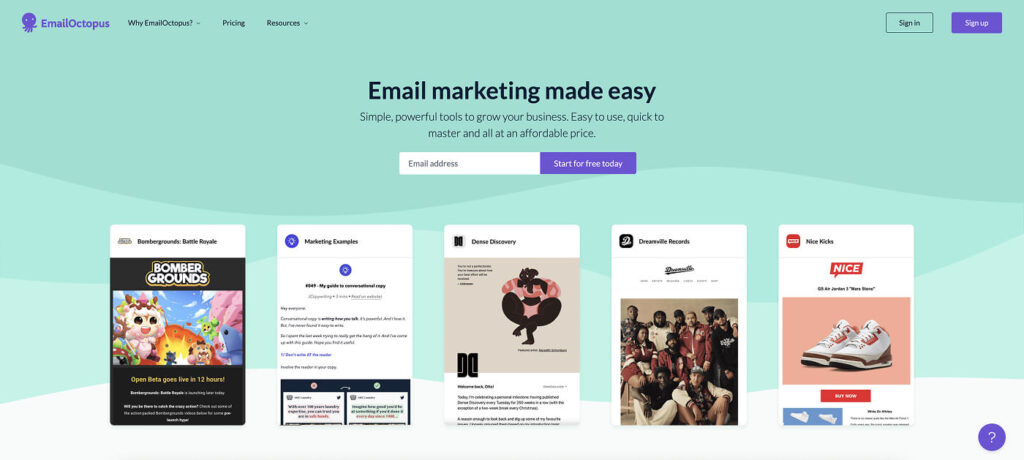
Pros
- Cost-effective with a free plan which accommodates 2,500 subscribers.
- Easy to use for beginners.
- Excellent support with live chat and email options.
Cons
- Lacks advanced features found in other tools.
- Limited design options.
Key Features
- Campaign Builder: Create and send one-off emails with ease.
- Automation Features: Set up simple automation flows, such as onboarding emails and freebies.
- Landing pages and forms: Grow your list with customisable sign-up pages and forms that make it easy to capture new subscribers.
Pricing
Free for up to 2,500 subscribers; paid plans start at $8/month.
2. Substack
Best for monetizing your writing
Substack is a platform built specifically for writers to create newsletters and monetize their content easily. With a straightforward setup, Substack allows you to focus on writing while they handle payment processing for subscriptions.
The platform is particularly user-friendly, making it ideal for authors looking to build and engage an audience without technical hassles.

Pros
- Simple to start and operate.
- Ideal for monetizing content without upfront costs.
- Built-in audience discovery features.
Cons
- Limited customization options.
- The 10% fee can accumulate with larger subscriber bases.
Key Features
- User-Friendly Setup: Easy for beginners to create and distribute newsletters.
- Payment Processing: Convenient subscription management for paid content.
- Audience Engagement: Tools to connect with subscribers directly.
Pricing
Substack is free to use, but they take a 10% fee from paid subscriptions, which is competitive compared to other platforms.
3. MailerLite
Best for budget-conscious authors
MailerLite is an excellent choice for writers looking to manage their email lists without breaking the bank.
With its intuitive drag-and-drop editor and robust features, MailerLite is perfect for creating visually appealing newsletters.
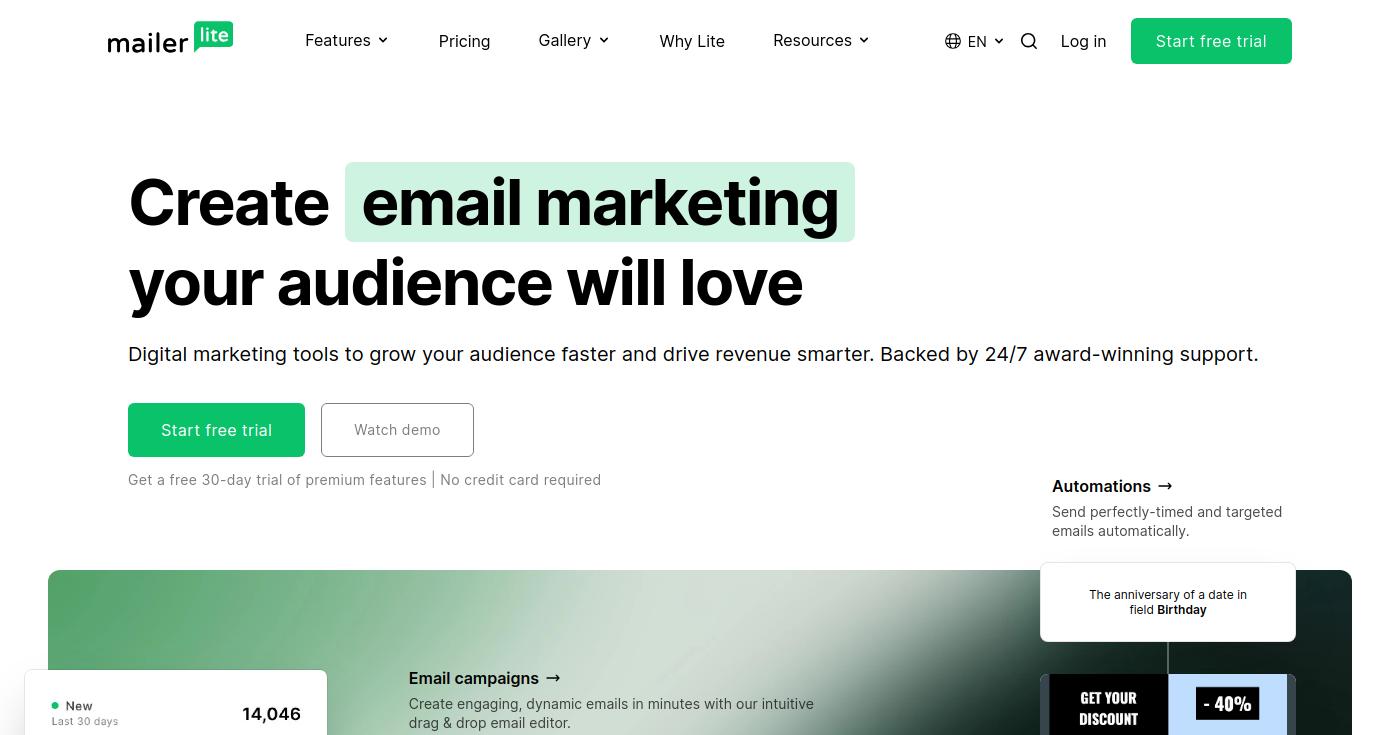
Pros
- Generous free plan for beginners.
- User-friendly interface.
- Comprehensive email marketing tools.
Cons
- Limited advanced features compared to premium platforms.
- Automation can be basic for experienced users.
Key Features
- Drag-and-Drop Editor: Easy to create beautiful emails.
- Automation Features: Set up automated email sequences effortlessly.
- Landing Page Builder: Create dedicated pages for specific campaigns.
Pricing
Free for up to 1,000 subscribers; paid plans start at $9/month for 500 subscribers.
4. Kit
Best for advanced automation
Kit is designed for creators who want to build their email lists and automate their marketing efforts.
With advanced features like landing pages and email sequences, it caters to writers looking to grow their influence.
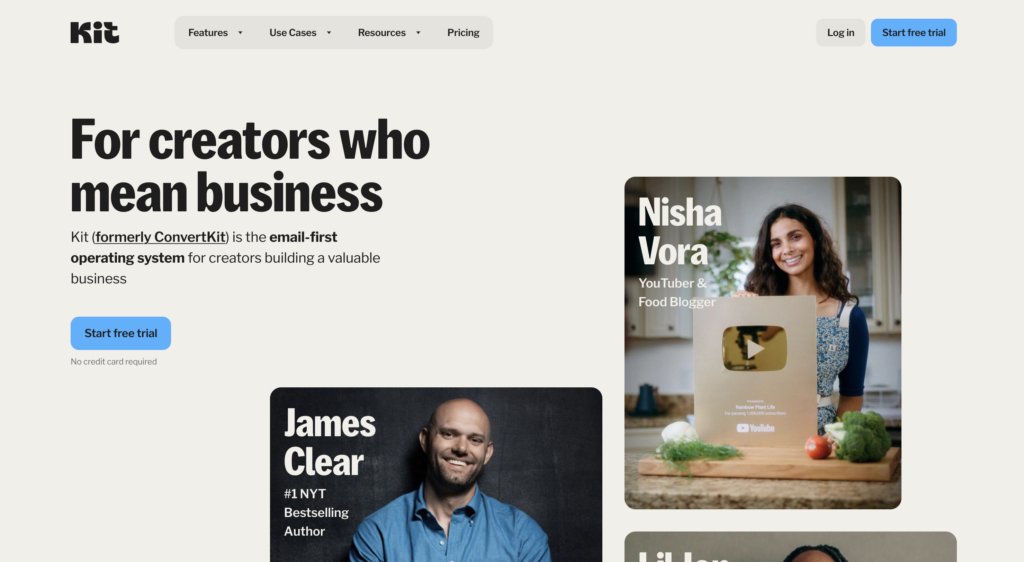
Pros
- Powerful automation tools.
- Excellent for segmenting audiences.
- Integrates with numerous platforms.
Cons
- Higher cost as your list grows.
- Steeper learning curve for beginners.
Key Features
- Email Capture Forms: Easily grow your list with customizable forms.
- Landing Pages: Create dedicated pages to promote your content.
- Advanced Analytics: Track performance and engagement effectively.
Pricing
Paid plans start at $9/month for 300 subscribers.
5. beehiiv
Best for growing audiences
beehiiv is an emerging platform that emphasizes audience growth and monetization features.
With a user-friendly interface and advanced metrics, beehiiv is ideal for new writers looking to engage their audience effectively.

Pros
- Generous free plan with growth features.
- Referral programs to expand your audience.
- Easy analytics tracking.
Cons
- Limited design customization options.
- Newer platform may lack extensive resources compared to veterans.
Key Features
- Referral Program: Incentivize existing subscribers to refer others.
- Custom Domains: Use your brand’s domain for newsletters.
- Engagement Analytics: Track subscriber interactions easily.
Pricing
Free for up to 2,500 subscribers; paid plans start at $87/month for 10,000 subscribers.
6. Gumroad
Best for selling digital products
Gumroad is primarily known for its ecommerce capabilities but offers a compelling newsletter solution for authors selling digital products.
It integrates seamlessly with your sales process.
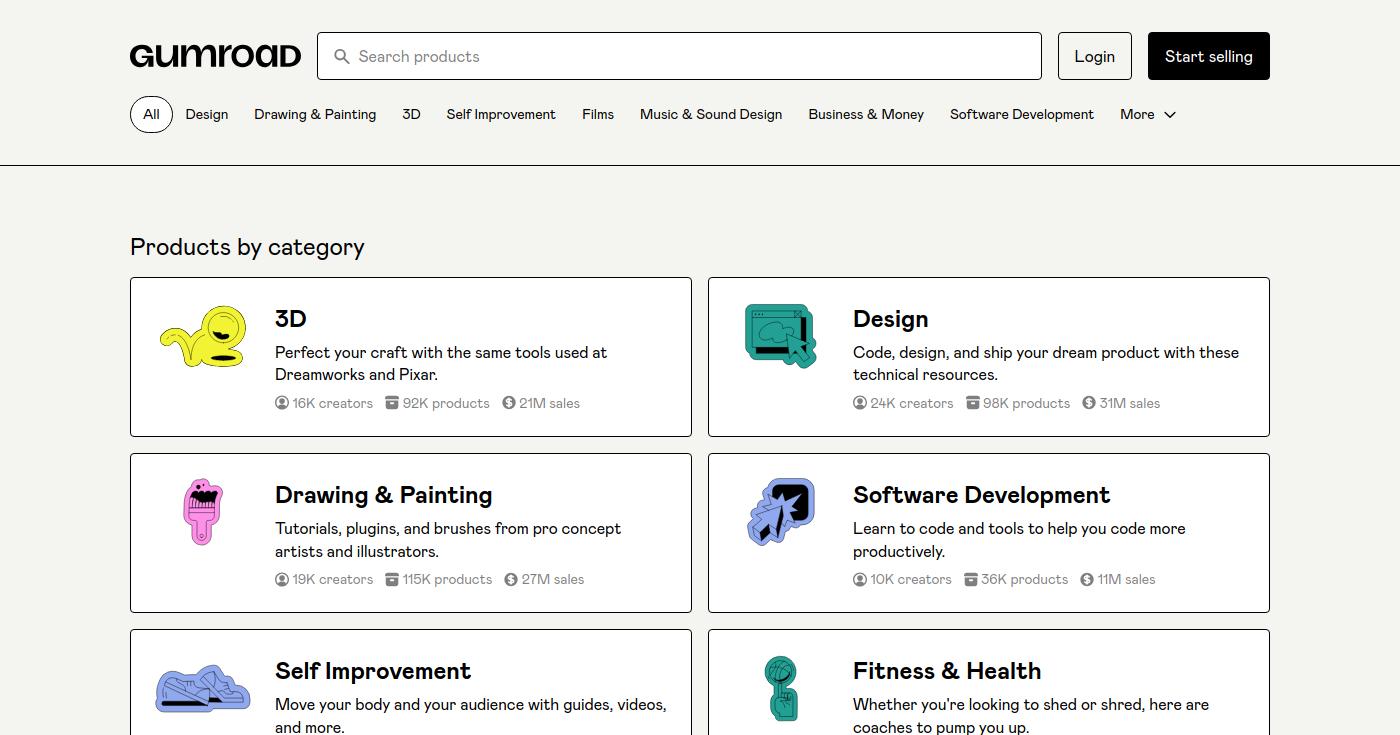
Pros
- Simple interface connecting sales and newsletters.
- Free to use with transaction fees.
- Ideal for selling products directly to subscribers.
Cons
- Limited features for standalone newsletters.
- Transaction fees can add up.
Key Features
- Sales Integration: Directly sell products through your newsletters.
- Newsletter Interface: Man age your audience while offering products.
- Analytics for Sales: Track product performance and subscriber behavior.
Pricing
Free to use; however, transaction fees apply for sales.
7. Flodesk
Best for stunning designs
Flodesk focuses on providing beautiful templates and an easy-to-use interface, making it perfect for writers who prioritize aesthetics in their newsletters.
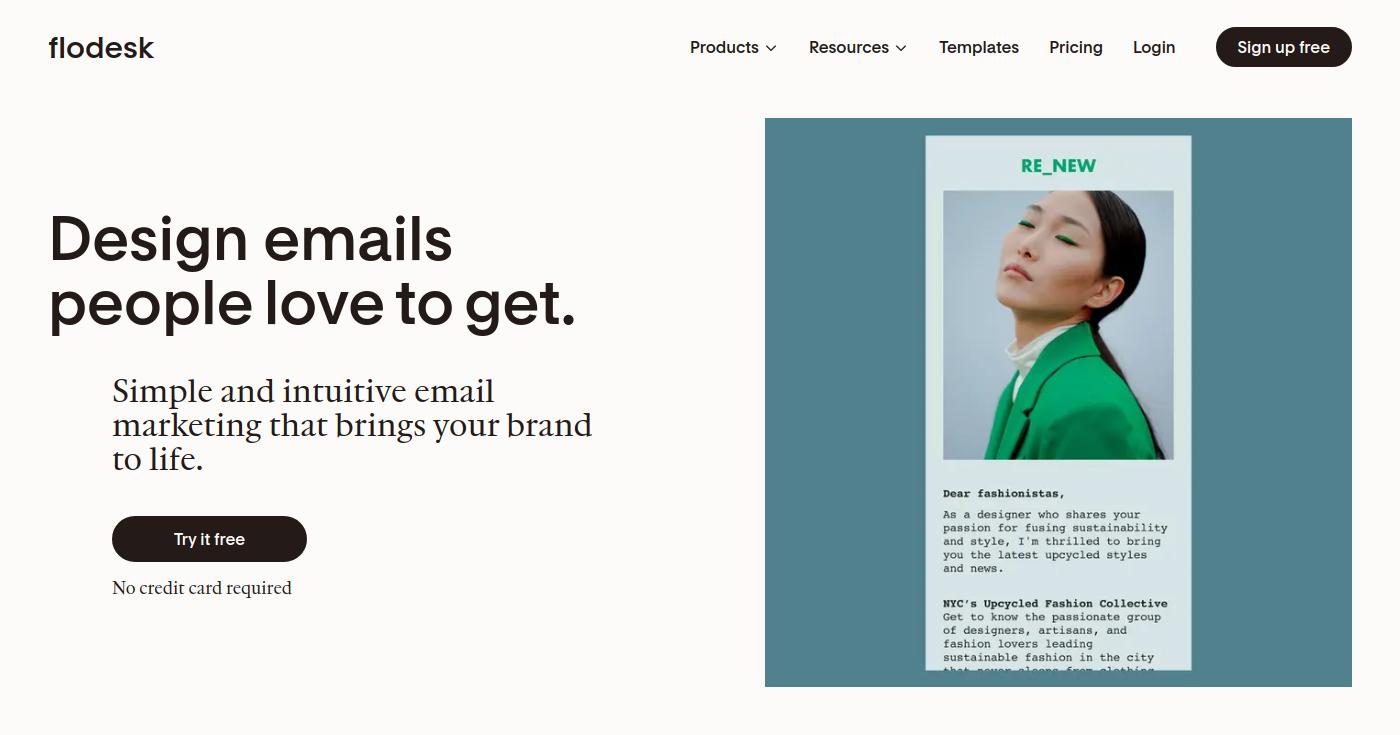
Pros
- Beautiful design templates.
- Unlimited emails and subscribers for a flat fee.
- User-friendly interface.
Cons
- Lacks some advanced features compared to competitors.
- Pricing may not be ideal for users with smaller lists.
Key Features
- Stunning Templates: Create visually appealing emails easily.
- Automation Capabilities: Set up automated workflows effortlessly.
- Integrations: Connect with various platforms to enhance functionality.
Pricing
$35/month for unlimited emails and subscribers.
8. Ghost
Best for integrated blogging
Ghost is a modern platform that combines blogging with newsletter services.
It’s ideal for content creators who want to manage their website and email list from a single platform.

Pros
- Full CMS capabilities for content management.
- Customizable newsletters and membership options.
- Supports paid subscriptions and memberships.
Cons
- More complex than typical newsletter platforms.
- Pricing can be higher for extensive features.
Key Features
- Integrated Blog and Email: Seamlessly manage your content and newsletters.
- Membership Options: Monetize your content with subscriptions.
- Custom Themes: Design your site and newsletters to match your brand.
Pricing
Starts at $25/month for up to 500 subscribers.
9. Mailchimp
Best for comprehensive marketing
Mailchimp is one of the most well-known platforms for email marketing.
It offers comprehensive features suitable for businesses and individual writers alike.

Pros
- Extensive integrations with other tools.
- Powerful analytics and reporting features.
- Great for marketers looking for a full suite of tools.
Cons
- Can be overwhelming for users focused solely on newsletters.
- Pricing can escalate as your list grows.
Key Features
- Campaign Management: Plan and execute complex email campaigns.
- Audience Segmentation: Target specific groups effectively.
- Advanced Analytics: Gain insights into campaign performance.
Pricing
Free for up to 500 subscribers; paid plans start at $13/month.
10. Campaign Monitor
Best for business email marketing
Campaign Monitor is a robust email marketing tool that provides extensive features for businesses and individual users alike.
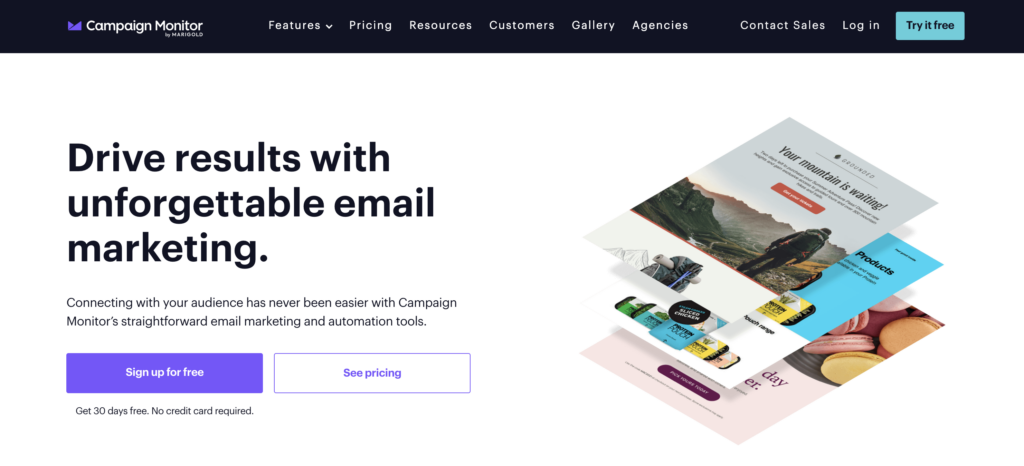
Pros
- User-friendly drag-and-drop builder.
- Comprehensive analytics and reporting tools.
- Strong focus on customer journeys.
Cons
- Pricing can add up for larger lists.
- Some users may find it less intuitive than competitors.
Key Features
- Drag-and-Drop Builder: Create custom emails without coding.
- Customer Journey Mapping: Visualize and optimize user journeys.
- Detailed Reporting: Analyze your email performance comprehensively.
Pricing
Starts at $12/month for basic features.
How to Choose the Right Best Newsletter Platforms for Writers for Your Needs
Selecting the ideal newsletter platform depends on your specific requirements and use case. Consider these crucial factors:
- User Experience: Look for platforms that offer easy navigation and setup.
- Feature Set: Determine which features are essential for your writing goals.
- Pricing Structure: Evaluate your budget and long-term scalability.
- Support and Resources: Check the availability of customer support and educational materials.
Emerging Trends in Best Newsletter Platforms for Writers
As we move further into 2025, several trends are shaping the newsletter landscape:
- Increased Monetization Options: Platforms are adding features that allow writers to monetize content more effectively, such as subscription models and donation-based funding.
- Focus on Analytics: Advanced analytics tools are becoming standard, enabling writers to track subscriber engagement and optimize their content strategies.
- Greater Emphasis on Design: With readers expecting visually appealing content, platforms are incorporating more design tools and templates.
Conclusion
Choosing the right newsletter platform is essential for effectively reaching your audience and achieving your writing goals. Each platform offers unique features tailored to different needs, whether you prioritize design, automation, or monetization.
Explore the top picks mentioned above to find the best fit for your writing journey, and take the first step towards building and engaging your audience today!
Frequently Asked Questions
Common questions writers ask when researching newsletter platforms.
What is the best newsletter platform for writers in 2025?
The best platform varies based on your needs, but Substack and MailerLite are highly recommended for their ease of use and features tailored for writers.
Are there free newsletter platforms available for authors?
Yes, platforms like Substack, MailerLite, and EmailOctopus offer free plans for authors, making it easy to start without upfront costs.
Which newsletter platform offers the best automation features?
ConvertKit is known for its advanced automation capabilities, allowing writers to create complex email sequences and workflows.
How much do newsletter platforms cost?
Pricing varies widely, with some platforms offering free tiers and others starting at around $9/month, depending on subscriber count and features.
What are the key factors to consider when choosing a newsletter platform?
Consider user experience, feature set, pricing structure, and customer support when evaluating which platform is right for you.
What are the emerging trends in newsletter platforms for writers?
Trends include increased monetization options, a focus on analytics, and greater emphasis on design, reflecting the evolving needs of content creators.
